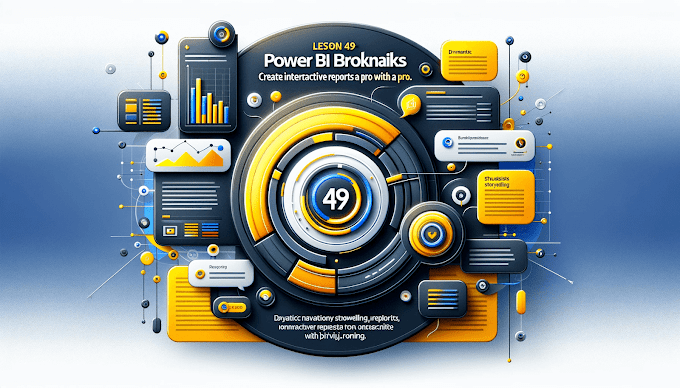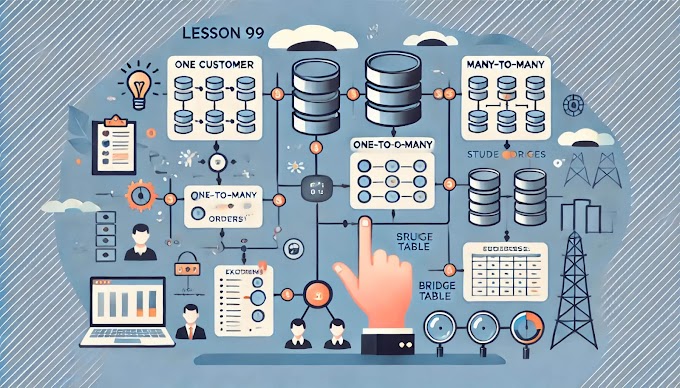Welcome back to Virvijay.com, where we simplify Power BI for you! 🎯
Are you struggling with slow reports, complex ETL processes, or data refresh issues? Power BI Dataflows can solve these problems!
In this blog, you’ll learn:
- ✅ What Power BI Dataflows are.
- ✅ How Dataflows improve data preparation & refresh speed.
- ✅ Step-by-step guide to creating a Dataflow.
- ✅ Best practices for using Dataflows efficiently.
1️⃣ What Are Power BI Dataflows?
🔹 Power BI Dataflows are cloud-based ETL tools that store and process data before it reaches Power BI reports.
- Instead of transforming data inside Power BI Desktop, Dataflows do it in Power BI Service (Online).
- This helps in faster refresh, reusable datasets, and reduced workload on reports.
🚀 Example:
- ✔️ Your company has Sales, Customers, and Inventory data.
- ✔️ Instead of loading raw data into Power BI every time, you create a Dataflow to clean & store it in the cloud.
- ✔️ All reports can now use this pre-cleaned dataset, making Power BI much faster!
💡 Why Use Dataflows?
- ✅ Centralized data transformation & storage.
- ✅ Improved Power BI refresh speed.
- ✅ Reusable datasets for multiple reports.
- ✅ Less load on Power BI Desktop.
2️⃣ Dataflows vs Datasets vs Data Sources
💡 Think of Dataflows as a "Pre-Processing Stage" before data reaches Power BI reports!
3️⃣ How to Create a Power BI Dataflow (Step-by-Step)
Follow these steps to create a Dataflow in Power BI Service.
Step 1: Open Power BI Service
- Go to https://app.powerbi.com.
- Select your workspace (not "My Workspace").
- Click New → Dataflow.
Step 2: Connect to a Data Source
- Click Add Tables → Choose Data Source.
- Select your source (SQL, Excel, SharePoint, etc.).
- Enter the connection details (e.g., server name, database).
- Click Next.
Step 3: Transform Data in Power Query
Click Transform Data to open Power Query Editor.
Apply cleaning steps:
- Remove duplicates
- Filter unnecessary rows
- Change data types
- Merge & split columns
Click Save & Close.
Step 4: Configure Dataflow Settings
- Name your Dataflow (e.g., "Sales Dataflow").
- Choose Refresh Frequency (Daily, Weekly, etc.).
- Click Publish.
💡 Now, your Dataflow is ready! Power BI will store this cleaned data in the cloud.
4️⃣ Using Dataflows in Power BI Desktop
Now that we created a Dataflow, let’s use it in Power BI Desktop.
- Open Power BI Desktop.
- Click Get Data → Power BI Dataflows.
- Select the published Dataflow.
- Click Load to use the cleaned data in reports.
Now, Power BI uses pre-processed data, making reports load faster!
5️⃣ Best Practices for Power BI Dataflows
- Use Dataflows for Large Datasets – Store & process large data before it reaches Power BI Desktop.
- Keep Dataflows Organized – Create separate Dataflows for Sales, Finance, HR, etc.
- Schedule Automatic Refreshes – Refresh Dataflows daily to keep reports updated.
- Avoid Duplicates – Remove unnecessary columns & redundant tables.
- Use Incremental Refresh – For large datasets, enable incremental refresh inside Dataflows.
6️⃣ Conclusion: Why Power BI Dataflows Are a Game Changer!
By using Dataflows, you can:
- ✅ Improve Power BI report performance.
- ✅ Store & clean data before it reaches reports.
- ✅ Reuse datasets across multiple Power BI projects.
- ✅ Reduce manual data transformations in Power BI Desktop.
Now, your Power BI dashboards will run faster & smoother!
7️⃣ What’s Next?
📌 In the next blog, you’ll learn:
- ✅ How to use Power BI Aggregations.
- ✅ Best ways to handle huge datasets efficiently.
- ✅ Advanced techniques to optimize Power BI performance.
🔔 Stay tuned to Virvijay.com for more Power BI tutorials!
💬 Got questions? Drop support@virvijay.com

.png)












%20Best%20Practices%20%E2%80%93%202025%20Guide'%20illustrating%20secure%20and%20controlled%20data%20acce.jpg)
%20Best%20Practices%20%E2%80%93%20Secure%20Your%20Reports%20Like%20a%20Pro'%20with%20virvijay.com.%20The%20des.jpg)

